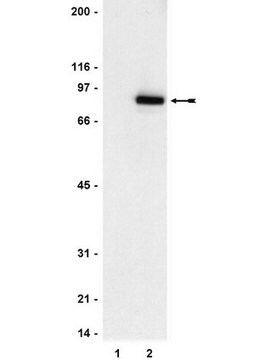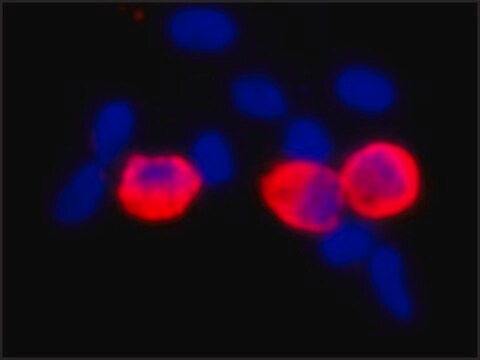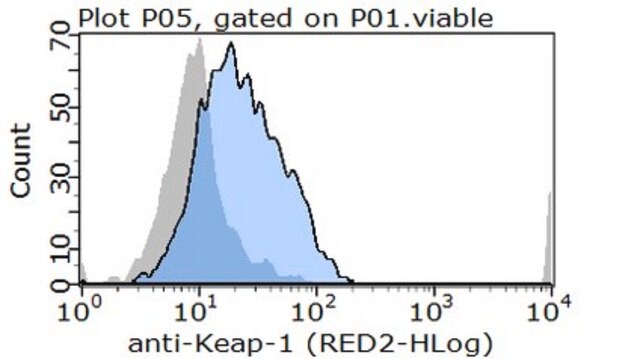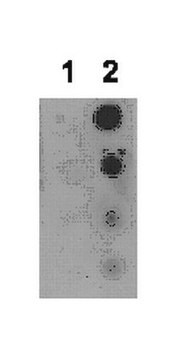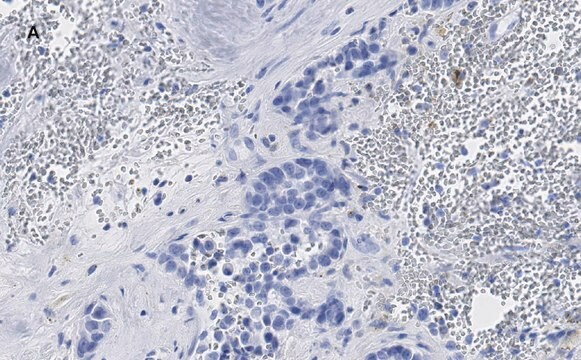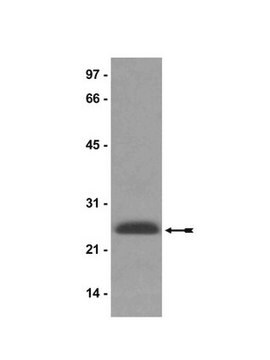05-495
Anti-phospho-STAT5A/B (Tyr694/699) Antibody, clone 8-5-2
clone 8-5-2, Upstate®, from mouse
Sinonimo/i:
signal transducer and activator of transcription 5A
About This Item
Prodotti consigliati
Origine biologica
mouse
Livello qualitativo
Forma dell’anticorpo
purified antibody
Tipo di anticorpo
primary antibodies
Clone
8-5-2, monoclonal
Reattività contro le specie
mouse, sheep, human, rat, bovine
Produttore/marchio commerciale
Upstate®
tecniche
western blot: suitable
Isotipo
IgG
N° accesso NCBI
N° accesso UniProt
Condizioni di spedizione
wet ice
modifica post-traduzionali bersaglio
phosphorylation (pTyr694/pTyr699)
Informazioni sul gene
human ... STAT5A(6776)
Descrizione generale
Specificità
Immunogeno
Applicazioni
Qualità
Western Blot Analysis: 0.5-2 μg/mL of this lot detected phosphorylated STAT5A/B in lysates from 3T3/NIH cells stimulated with PDGF. 0.5-2 μg/mL of a previous lot detected phosphorylated STAT5A/B in lysates from 3T3/A31 cells stimulated with PDGF and from HeLa cells stimulated with interferon-a (IFN-a).
Descrizione del bersaglio
Stato fisico
Risultati analitici
IFN-α induced HeLa cells or GM-CSF treated TF-1 cells
Altre note
Note legali
Non trovi il prodotto giusto?
Prova il nostro Motore di ricerca dei prodotti.
Codice della classe di stoccaggio
12 - Non Combustible Liquids
Classe di pericolosità dell'acqua (WGK)
WGK 1
Punto d’infiammabilità (°F)
Not applicable
Punto d’infiammabilità (°C)
Not applicable
Certificati d'analisi (COA)
Cerca il Certificati d'analisi (COA) digitando il numero di lotto/batch corrispondente. I numeri di lotto o di batch sono stampati sull'etichetta dei prodotti dopo la parola ‘Lotto’ o ‘Batch’.
Possiedi già questo prodotto?
I documenti relativi ai prodotti acquistati recentemente sono disponibili nell’Archivio dei documenti.
Il team dei nostri ricercatori vanta grande esperienza in tutte le aree della ricerca quali Life Science, scienza dei materiali, sintesi chimica, cromatografia, discipline analitiche, ecc..
Contatta l'Assistenza Tecnica.